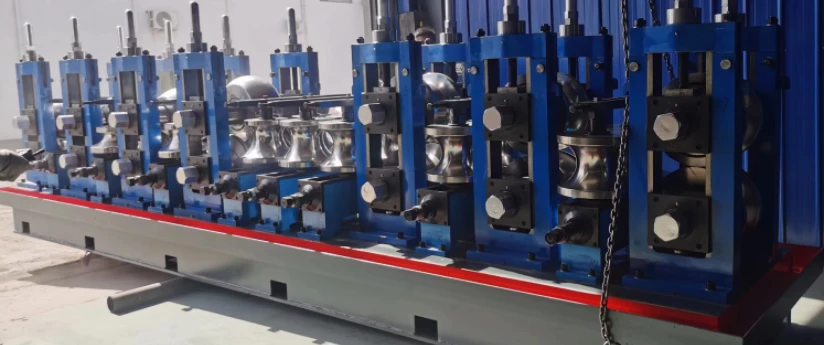tube ball mill
Understanding Tube Ball Mills An Essential Component in Mining and Cement Industries
In the mining and cement industries, efficient grinding processes are crucial for the production of fine particles that meet quality standards. Tube ball mills, a type of grinding mill, play a significant role in these industries by facilitating the pulverization of raw materials into fine powders. This article dives into the mechanics, applications, advantages, and recent developments surrounding tube ball mills.
What is a Tube Ball Mill?
A tube ball mill is a cylindrical device filled with steel balls and materials that need to be ground. The mill operates by rotating around its axis, causing the balls to cascade and grind the material. There are two main types of tube ball mills the vertical and the horizontal configuration, with the latter being more commonly used in industries.
The system is typically composed of three key components the grinding chamber, the drive mechanism, and the discharge hopper. The grinding chamber is where the grinding media, usually steel balls, and the material to be crushed are placed. The drive mechanism rotates the mill, while the discharge hopper collects the finely ground material.
Working Principle
The working principle of a tube ball mill is relatively straightforward. As the mill rotates, the balls within the chamber are lifted to a certain height before falling back down upon the material. This repeated impact and friction effectively break down the particles into a powder. The process can be influenced by several factors, including the speed of rotation, the size and weight of the balls, and the type of materials being processed.
The efficiency of the grinding process in a tube ball mill can be quantified by considering parameters like the grindability of the material, the energy consumption during operation, and the size distribution of the resulting powder. Optimal adjustments can lead to significant improvements in output quality and energy efficiency.
Applications of Tube Ball Mills
tube ball mill

Tube ball mills are predominantly used in the mining and cement industries. In the mining sector, they are essential for grinding ores that may contain various minerals such as copper, gold, and coal. The grinding of these substances is vital for extraction processes that follow.
In the cement industry, tube ball mills are used to process raw materials like limestone, clay, and silica, which are fundamental in cement production. The ability to grind these materials uniformly ensures high-quality cement, which is crucial for construction projects.
Furthermore, tube ball mills have applications in the manufacturing of chemicals and in food processing, where fine powders are required.
Advantages of Tube Ball Mills
One of the primary advantages of tube ball mills is their adaptability. They can grind materials of various hardness levels and compositions, making them versatile in different industrial applications. Additionally, tube ball mills offer relatively low operational costs compared to other grinding systems, as they require less maintenance and have a long operational lifespan.
Moreover, with advancements in automation and control systems, tube ball mills now come equipped with digital monitoring features. These enable operators to optimize the grinding process in real time, leading to enhanced productivity and decreased waste.
Recent Developments
The design and functionality of tube ball mills have witnessed significant advancements over the years. Innovations such as the incorporation of advanced materials for grinding media and enhanced liners improve wear resistance and efficiency. Furthermore, research continues into optimizing the parameters governing the grinding process, aiming to maximize efficiency while minimizing energy consumption.
In conclusion, tube ball mills are indispensable in the mining and cement industries, offering an efficient solution for grinding various materials. Their robust design, adaptability, and cost-effectiveness make them a preferred choice for many operators. As technology advances, the future of tube ball mills looks promising, with innovations set to enhance their performance and broaden their applications.
-
High Frequency Straight Seam Welded Pipe Production Line-BzZhou Xinghua Machinery Equipment Manufacturing Co., LTD.|Precision Welding, High EfficiencyNewsJul.30,2025
-
High Frequency Straight Seam Welded Pipe Production Line|BzZhou Xinghua|Precision Welding&EfficiencyNewsJul.30,2025
-
High Frequency Straight Seam Welded Pipe Production Line - BzZhou Xinghua|Precision Engineering&EfficiencyNewsJul.30,2025
-
High-Frequency Straight Seam Welded Pipe Production Line-BzZhou Xinghua Machinery Equipment Manufacturing Co., LTD.NewsJul.30,2025
-
High-Frequency Straight Seam Welded Pipe Production Line-BzZhou Xinghua Machinery Equipment Manufacturing Co., LTD.|Precision Manufacturing, High EfficiencyNewsJul.30,2025
-
High Frequency Straight Seam Welded Pipe Production Line-BzZhou Xinghua Machinery Equipment Manufacturing Co., LTD.|Precision Steel Pipe Manufacturing&Industrial EfficiencyNewsJul.29,2025


